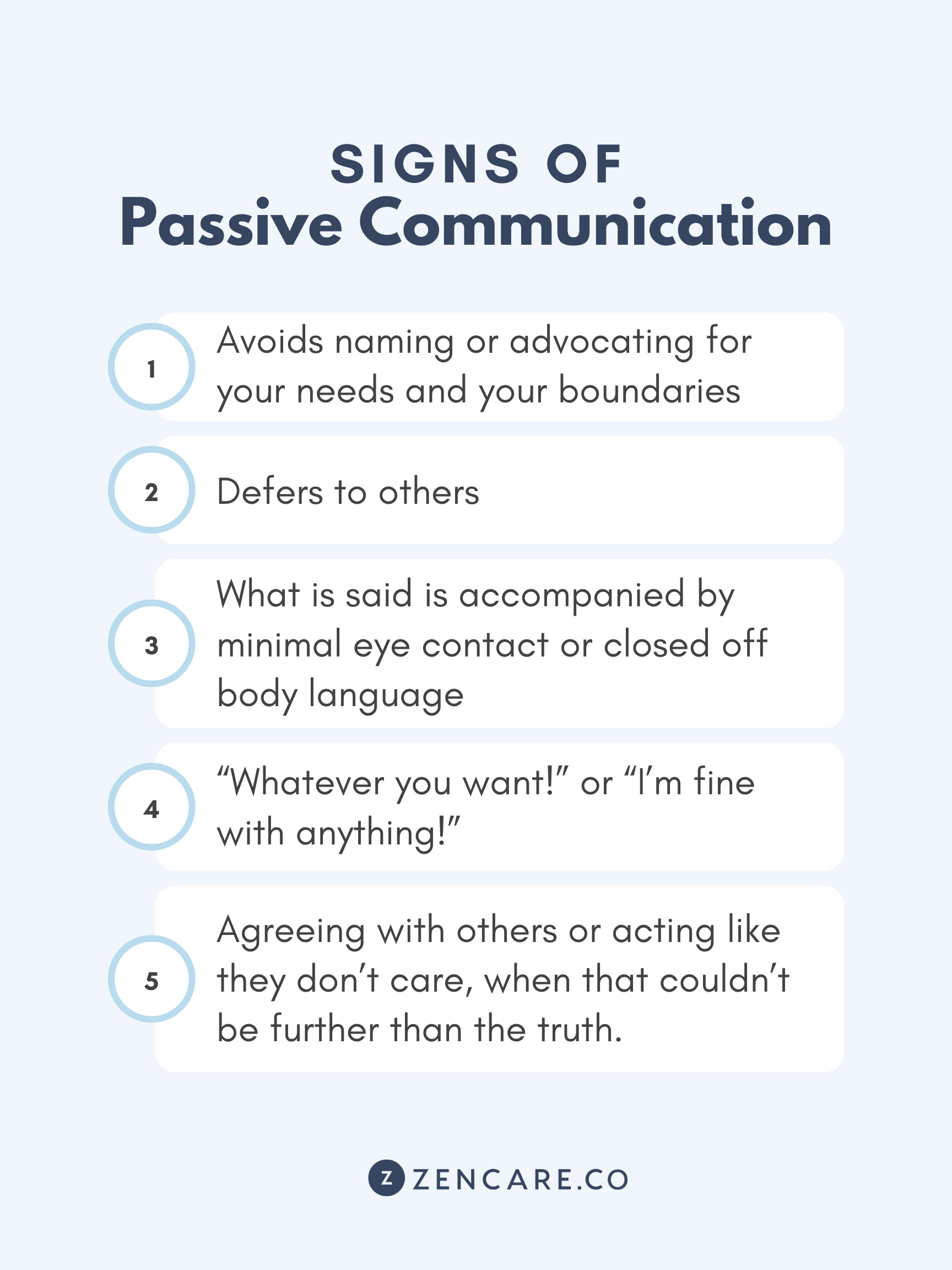Humans are social creatures. Our affinity for social connection is both something we inherit in our genes and through the experiences we have. In Brene Brown’s well-known TED talk, she tells the audience that humans are wired for connection — that connection gives us a sense of belonging and a sense of meaning in our lives. With such high stakes, how we connect with others is imperative to our well-being, and it can come down to our communication styles.
There are four communication styles. Read on to learn more about each one of these styles and how you can improve your communication. You might even find attributes of one of the communication styles familiar!

What are communication styles?
Even when we speak the same language as someone else, the ways that we construct sentences — and the tones, speed, and cadence we use when verbalizing these sentences — makes up our communication style, which takes our words to another level of meaning. There are many ways to say the same thing, and this range opens the door for varied interpretations. In its most basic definition, communication style describes the way that you convey information to others.
Communication styles are important in a number of settings. In fact, it’s hard to think of a setting that doesn’t benefit from a strong communication style! Many people examine communication styles in the context of relationships, particularly romantic relationships. This describes how partners speak with one another and how they express their needs and wants. Other people bring up the subject of communication styles in the work context, especially in conversations between managers and teams.
How many communication styles are there?
We can typically boil communication styles down into four categories. Everyone has a different way of talking. To express one piece of information, there can be dozens of ways to construct a sentence — and even more ways of verbalizing those sentences.
What are the 4 communication styles?
The four communication styles include:
- Passive communication
- Aggressive communication
- Passive-aggressive communication
- Assertive communication.
These are broad categories, and most communication can be sorted into one of them. People learn their communication style through their early experiences. We see others communicate constantly, so at an early age, we take in the ways that our parents, teachers, classmates, and characters on TV or in movies talk with one another.
“From a trauma and attachment perspective, each is linked to different survival strategies. I learned that this is how I have to communicate to survive and get my needs met,” says Uche Okolie, LCSW.
Often, we use different communication styles in different settings. It’s also important to note that one communication style could be appropriate in a certain situation but inappropriate or even harmful in another situation. Communication styles often clash with one another, leading not only to misunderstanding but also to conflict. Learning about these different communication styles and how they play out in our lives is a great way to improve your self-awareness and grow strong, healthy bonds with other people.
Okolie shares, “Understanding our communication style is critical for self-awareness, personal development, and relationships. It helps identify strengths and weaknesses, helps improve our interactions with others, which can often lead to overall increased self perception and well-being.”
What is passive communication?
Everyone has the right to set boundaries to protect themselves physically and psychologically, and people who have a passive communication style avoid naming or advocating for their needs and their boundaries. Passive communication defers to others, and is accompanied by minimal eye contact or closed off body language. Passive communicators might often say things like, “Whatever you want!” or “I’m fine with anything!” They likely have opinions or preferences, but don’t interject this information into conversation, instead keeping them to themselves. They’ll agree with others or act like they don’t care, when that couldn’t be further than the truth.
People use passive communication styles when they want to avoid conflict. People who have a passive communication style often feel like they’re being walked over by others and that their needs aren’t being met. While they may have learned to use a passive communication style to avoid being the target of an attack, this communication style can lead to low self-esteem and low self-worth. It might also lead to resentment and misunderstandings.
What is aggressive communication?
An aggressive communication style is the opposite of passive communication. Those who use an aggressive communication style focus their communication around their own needs, and often don’t allow others to have needs or express their opinions. The body language associated with this communication style is also closed off, in the form of crossed arms, fingers pointed in accusation, rolled eyes, and a loud voice.
People who are aggressive communicators often come off as demanding, difficult, and dominating. They shut others down and often refuse to be contradicted. While they strongly set boundaries according to their needs and wants, they also ignore other people’s needs. Sometimes, people who use aggressive communication feel guilty after particularly difficult conversations, as they know that they became too defensive in the moment and weren’t open to other people’s ideas.
What is passive-aggressive communication?
The passive-aggressive communication style is a combination of the two communication styles. In the passive-aggressive communication style, individuals don’t explicitly state their needs or wants, though they disagree in implicit ways. They might say that they’re okay or that something is fine, but they don’t actually think so — and instead hold any disagreements as grudges, lashing out in other ways like sarcasm or enacting the silent treatment.
People who use the passive-aggressive communication style often invoke a sense of shame in the people with whom they’re communicating. They often use “you statements,” telling others that they are to blame for issues or for miscommunications. Their disagreement is subtle, which can be just as harmful.
What is assertive communication?
The fourth communication style is assertive communication. Assertive communication is clear, honest communication that is respectful of other people’s needs while also asserting their own needs. People who use the assertive communication style use “I statements,” sharing with others their thoughts and feelings in a way that doesn’t inhibit others from doing the same. They take responsibility for their words and for their actions, and are open to feedback. They open the conversation rather than close it, and they are willing to problem-solve with others.
The assertive communication style is considered the gold standard when it comes to communicating with others. This communication style can empower someone to feel confident in themselves and internalize their self-worth.
How are communication styles used in relationships?
One of the core pillars of relationships is communication. By communicating in a clear, assertive way, partners can openly discuss their needs within the relationship, which can result in a more meaningful and fulfilling connection.
In conflict, it’s all too easy to slip into passive, aggressive, or passive-aggressive communication styles. Here are some examples of the ways that these communication styles might look in a situation of wanting help cleaning up the house before a dinner party, compared to an assertive communication style:
- Passive: “Oh, you must be busy with something else, no worries, I’ll clean up the apartment by myself. Seriously, it’s fine, I don’t mind doing it!”
- Aggressive: “Wait, you’re just going to sit there? Wow. I need your help to clean up and you’re going to make me do all of the work. This is so typical of you.”
- Passive-aggressive: “Just me, over here, doing all of the work. Again. No, no, no, I don’t want your help. Probably better that I just do it by myself, like I do everything else around here.”
- Assertive: “Hey, I know that you’re a bit busy right now, but I need your help to clean up before our party tonight. Would you mind dusting while I vacuum? It would be good if we can share the load evenly.”
Finding a way to maintain a healthy dialogue that is open, vulnerable, and honest is the best way to work through conflict and to build a strong relationship. This includes being transparent about what you’re thinking and being considerate in the way that you make requests or suggestions. It’s also important to note that someone’s environment can reinforce communication styles in relationships. For example, gendered or cultural expectations or technology based communication can normalize certain communication patterns.
How are communication styles used in the workplace?
Because we spend so much time of our lives at work, having an assertive communication style can be a huge benefit to you — and to your colleagues. When there is an outcome or deliverable on the line, conflict can become even more detrimental to one’s mental health. By talking openly and vulnerably about the work, including ideas, teams can collaborate more freely. They’ll also feel more fulfilled in their work.
Communication between a manager and an employee can become strained in times of conflict. Maintaining an assertive communication style means that both parties can set boundaries and talk openly about how to reach middle ground. Managers especially benefit from communication training, as much of their work is communicating with their team towards a central goal.
How can therapy help with my communication style?
Therapy is a great tool to use when attempting to improve your communication style. You can unpack your current communication style, including its origins, and talk about past experiences with miscommunications or conflict, and examine where communication styles clashed. Your therapist can also help you practice healthy communication, as well as support you to set healthy boundaries with others.
“Knowing you are a passive communicator can lead to seeking strategies to be more assertive, which will improve access to needs and goals, improving self-esteem, mood, and relationships. Depending on your communication style, you may be seeing impacts such as burnout from lack of expressing needs, ruptures in relationships from overly expressing them at the expense of others, or feeling unbalanced or physically stressed — and understanding why that is can help you manage,” says Okolie.
A therapist can help you gain confidence to be assertive, work through those feelings of burnout and manage fragile relationships.
Many types of therapists specialize in helping clients with their communication styles and communication issues. You can even filter by specialty, including communication issues, to find a therapist to help you connect with others in vulnerable, healthy ways.
